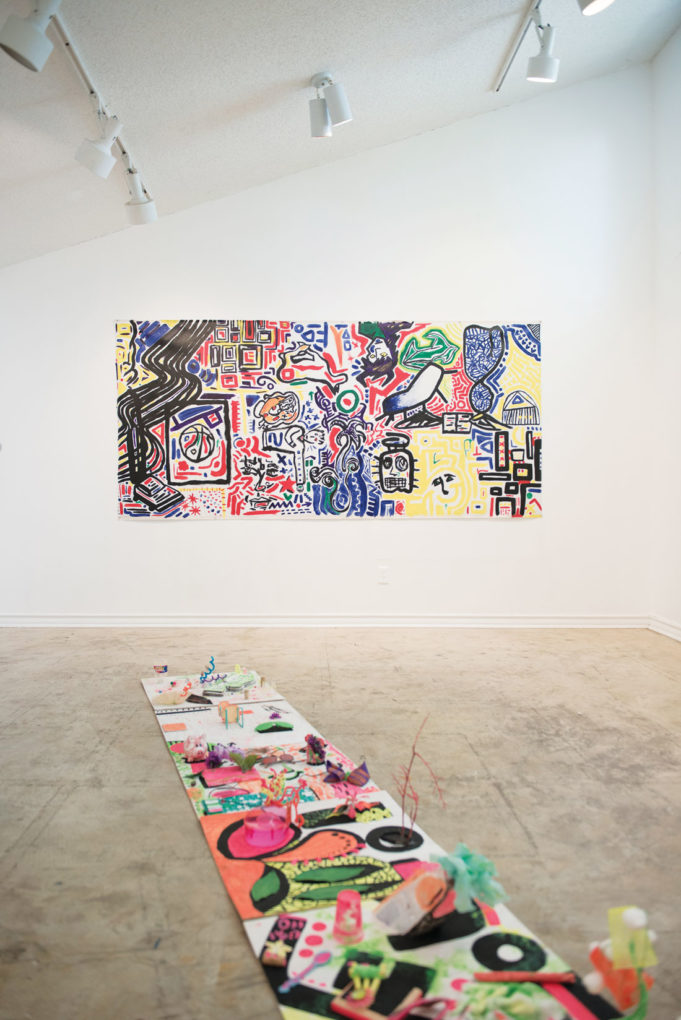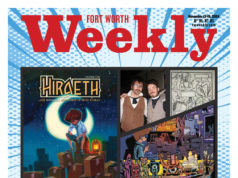The Modern Art Museum of Fort Worth welcomes nearly 180,000 visitors a year. Several hundred come as students participating in educational tours, and countless thousands more enter the sublime cavern to attend lectures, concerts, and other events.
But arguably the Modern’s most prestigious program is one of its smallest. Now in its 10th year, the Teen Artist Project accepts 15 to 20 applicants from about 50 candidates. Some of the brightest and most gifted pre-collegiate painters and sculptors in North Texas are given the opportunity to work side by side with professional local artists and dive into the museum’s educational resources.
The project isn’t just an award. It’s almost as demanding as a college class.
“We meet every Sunday from the beginning of the academic season through May, so it’s quite a commitment on their part,” said Jesse Barnett, assistant curator of education at the Modern. “Because of that, I feel we get a strong caliber of artists who have a high level of seriousness and ambition. Some of our students commute an hour each way.”
Along with portfolios, potential applicants must submit letters of recommendation and a resumé. The point is not to grill the students as much as it is to get them accustomed to the real world’s seemingly endless submissions processes.
“It’s not meant to be this intense thing,” he said. “But the fact is, there are too many people in the art world and not enough positions for them to fill. You have to submit your works, and sometimes you get denied. But that’s a part of life. I always encourage them to apply again.”
This Sunday is orientation, when Barnett will not only show the students around the museum but will introduce them to their private workspaces. Fan-caaay.
Next month, UTA professor and artist Carlos Don Juan will lead four sessions before November welcomes Bradly Brown, a former Visionary Artist and co-founder of HOMECOMING! Committee, an award-winning North Texas art collective.
The studio projects are informed by current Modern exhibits, which means that for this group, Kehinde Wiley’s one-man show will be the focus. And due to the New York City artist’s Old World-meets-New subject matter, that means that the students will be discussing socioeconomics.
“I don’t just want them to make a craft painting or something they can pin on the fridge,” Barnett said. “These projects focus on technique and materiality, but it’s more about ideas, thinking, and working together.”
High school senior Elle Muñoz-Diaz applied on a whim. And got accepted.
“I applied not thinking I would get in,” she said. “I had doubt about not only my art but also the art world and how I could fit into even this small part of it. TAP created an environment where I had to shift how I saw what art is and who can make it. Working with a nontraditional artist [Kenny Scharf] gave me the confidence to continue creating what I felt like creating, even if it wasn’t like the stuff I saw in textbooks or magazines.”
Muñoz-Diaz wasn’t sure about her immediate future. Her STEM-based courses were directing her toward a career in engineering. But after completing the yearlong program, she’s made a decision. She’s going to be an artist.
The project culminates in a spring show at Gallery 414, where at least one piece from each participant is displayed. The bulk of the selections, though, is based on merit.
“I don’t want it to feel like a coffee-shop show,” Barnett said.
John Hartley, a cofounder of 414, where TAP has had a home since 2006, said gallery experience is invaluable to young artists.
“This program shows teens what to expect from galleries,” he said. “As a college student, I didn’t know how galleries worked, and these kids haven’t even gotten out of high school yet. That’s pretty neat. I think artists don’t understand that the gallery plays a big part in arranging the show.”
Barnett feels the Modern wins by embracing the community.
“You can see [the students] are really happy and proud of themselves, and their parents and grandparents are too,” he said. “It’s a cool occasion.”
Barnett knows that most TAP students will not pursue art fulltime, although, he said, a lot may. No, he said, the goal is to shape young minds to think creatively and freely, to foster a love and deeper understanding of contemporary art, and to supplement existing public school programs.
“You feel really good when these young students feel powerful enough to engage in a conversation about a complex subject,” he said. “At that age, I think confidence is very important. Some students have that already, and some don’t. We let them know they are all significant participants, and we can all contribute to the conversation. We are trying to provide an environment that helps foster that.”












